Brady Street Apartments Debated at Meeting
And Frank Alioto gives remarkable speech about Brady Street's potential.
As is his custom whenever a new development in his district requires a zoning change, Ald. Nik Kovac held a public meeting on the proposal of Ogden and Co. to construct an apartment building on the northwest corner of E. Brady St. and N. Humboldt Ave. [See Plenty of Horne: “New Apartment Complex Planned for Brady Street” Urban Milwaukee, July 9th.]
Kovac convened the meeting Wednesday at St. Hedwig’s Church, 1702 N. Humboldt Ave., an 1886 building located directly across the street from the proposed development. Over 75 neighbors and interested citizens attended the two-hour presentation that began at 7 p.m. Jason Pietsch, Peter Ogden and Jon Ross represented the developer at the event.
Kovac made a brief introduction, and attendees were shown elevations of the proposed three-story, 23-unit apartment building that would replace a 2,740 square foot, one-story utilitarian building constructed in 1948 on the site of what had been a 19th century mixed-use building lost to fire in Brady Street’s greatest blaze, in 1946.
Architect Tim Wolosz of Engberg Anderson explained that the structure was envisioned as two separate buildings, with a commercial-style brick facade for the Brady Street elevation, and a broken-up facade of many materials for the residential, Humboldt Ave. elevation.
That design was greatly modified from a January proposal that featured a more monolithic, conventional approach that Kovac likened to a suburban office building. The proposed building took some clues from neighboring structures, including the use of bay windows and other features, according to the architect’s statements.
After the presentation of the plans, Kovac opened the floor to questions from the audience. As has always been the case at such meetings, the first half-dozen or so questions were about parking. Where would shoppers park? (On the street.) Are there enough spots for residents? (Yes. Demand has slackened for parking.) Is parking included in the rent? (No.)
Finally a non-parking observation from an attendee who wondered, “is it a little bit modern for Brady Street?” A murmur of assent echoed through the cavernous church.
This was a cue for neighbor Frank D. Alioto to step forward.
“Hopefully we can have a constructive discussion of where this neighborhood is moving,” Alioto said. Alioto has been working with neighborhood issues for 20 years, he said, and the top issue in every single strategic plan has been parking, he said. “For 20 years we’ve been talking about parking. We’ve all made it this far and have thrived,” despite concerns about parking, he said. “There is lots of momentum. It is cool that people want to move here. Property values will not be going down anytime soon,” despite the parking situation, he said.
Alioto also said he saw no reason to preserve the existing building. “It’s not worth saving in my opinion. It is basically a shoe box. No architectural value. I hope we can agree that there is room for improvement.”
A new building with 23 apartments would increase the density in the neighborhood, and that is a good thing, Alioto said, and it’s one reason why Brady Street can thrive despite the perception of inadequate parking. “With more density, people can walk (instead of drive.)” Density will lead to improved public transit, as well he said, and would bring new customers to existing stores on the street.
“Downer Avenue fights density, and then they have vacant storefronts,” he said. “These are great businesses, but half the storefronts are vacant.”
Alioto also addressed the issue of the appearance of the building, saying he found much to like in it. He then launched into a slide show he had prepared to show recent development in the area as well as photos of buildings lost and saved in the area.
Alioto has been creating and collecting these photos and building histories since 1996, and has compiled his “A Brief History Lesson” articles from the Brady Street News into a book entitled “Milwaukee’s Brady Street Neighborhood,” published by Arcadia Press in 2008 (and available at Urban Milwaukee: The Store).
The first slide in Alioto’s presentation was of the smoldering ruins of the old Schowalter Pharmacy after the early morning fire of 1946 that he called Brady Street’s worst. Here was a mixed-use building that was much denser than the structure that replaced it, and which the proposed apartment complex would itself replace. The second slide gave a hint as to why the building was a complete loss — a photograph of Engine House 6, a Brady Street landmark in its own right that had been vacant and under reconstruction at the time of the fire. Alioto knows that building well, since he ran Engine House 6 before being promoted to the Milwaukee Fire Department‘s 4th Batallion Chief in 2012.
The next photograph was a vintage one of the rebuilt pharmacy, which all concede is an unremarkable structure. Ald. Kovac and Alioto reminded the audience that the Brady Street Historic District did not exist in 1946, leading to buildings such as this one. “Brady Street got pretty shabby in the ’60’s, ’70’s and into the ’80’s, Alioto said. But now, “Brady Street is hot. The whole East Side is hot. We should embrace it,” he added. “Everywhere we look is development.”
Alioto then addressed the new vs. old dichotomy. “Not everything that’s new is ugly,” he said. “Some things are worth doing if done sensitively.” Conversely, not all old buildings were gems, either. The slides then clicked one after another — a lost building that has been replaced by a dreadful Walgreens, and another old building at the FedEx Kinko’s corner, could have been retained, but had gotten worn down. Neighbors did get involved with the creation of the CVS pharmacy on the street, but this was an earlier era, (the turn of this century) and the resulting building is a cave with a fake facade, he said. “But at least the parking lot was not on the corner,” as it is with the Walgreens, Alioto added.
What about the historic character of the neighborhood? Can it be replicated? “If you want to build old, build with old materials,” he said. (A good example on Brady Street is the Green Fields store.) Less successful in Alioto’s eyes was the $2 million 1996 Passeggio, a mixed-use structure developed on the northeast corner of Brady and N. Arlington Pl. “Julilly Kohler did wonderful things for the neighborhood with Passeggio. It was built to mimic the old neighborhood, but built with new materials. I’m on the fence about this one,” he said.
Alioto showed a far more egregious example of a new building mimicking an old one — an infill double house built on a side street. “Whoever designed it should be sentenced to live across the street from it,” he said, to general laughter.
According to Alioto’s assessment, the important thing is that the new building match the density, scale and massing of the neighborhood, and should use modern materials. After all, the neighborhood wasn’t built in a unit, and it is a generally conceded principle of Historic Preservation that new buildings not try to present themselves as old ones.
Even so, there was still some concern by the attendees with the design of the building. Some complained that the buildings look “like every other building going up lately.” Ald. Kovac explained that this has something to do with the materials available for construction, and with the economics of developing in dense, urban areas. If you see brick on a building, he said, do not think for a moment that the building is actually made of bricks. It’s just a facade. Buildings with solid-brick construction, like St. Hedwig’s Church, are rather rare in Milwaukee, and even 19th century “brick” buildings are actually veneer over frame construction.
No consensus was reached by the end of the meeting, Ald. Kovac said, hinting that further refinements to the building’s design may be forthcoming in the city review of the project, which will take place in late September. “There is a variety of opinions on the design,” he told Urban Milwaukee. “It’s not a done deal.”
As far as the old bugaboo, parking, Kovac was philosopical: “Parking is a problem we can manage but can never solve,” he said.
Although the neighbors have not agreed on the appearance of the building, there is one thing Kovac found consensus on as he polled the 75 people on their feelings about the project. “Nobody wants to keep the building as it is,” he said.
Renderings and Plans
Seen at the Scene
Among neighbors and business owners in attendance at the event were Dean Cannestra, whose home borders the development, and whose garage the developer probably coveted, Grant Gehweiler, Jim Mitchell, Pat Suminski, Russ Drewry, Shirley Ferguson, Jon Bohrer, Tina Klose, Teresa Morton, Michael Glorioso, Teri Regano, Annette French, Bryce Clark and others.
Fun Fact: Frank Alioto and his wife Rachelle bought their home on N. Astor St. about 20 years ago. It had previously been the residence of John Ogden, Jr., who is coincidentally the brother of Peter Ogden, the developer of the proposed project. For years, Ogden was the only major real estate company active in the East Side and Downtown market, at a time when its competitors were strictly suburban.
Photos from the Scene
Political Contributions Tracker
Displaying political contributions between people mentioned in this story. Learn more.
- April 22, 2019 - Nik Kovac received $250 from Peter Ogden
- April 10, 2019 - Nik Kovac received $100 from Michael Glorioso
- February 18, 2016 - Nik Kovac received $50 from Teri Regano
- February 11, 2016 - Nik Kovac received $100 from Michael Glorioso
- February 5, 2016 - Nik Kovac received $500 from Peter Ogden
- May 7, 2015 - Nik Kovac received $50 from Teri Regano
Plenty of Horne
-
Milwaukee Modernism Gains National Awards
 Dec 15th, 2025 by Michael Horne
Dec 15th, 2025 by Michael Horne
-
New Rainbow Crosswalks Mark Milwaukee’s LGBTQ+ History
 Oct 8th, 2025 by Michael Horne
Oct 8th, 2025 by Michael Horne
-
Welcome Back, Tripoli Country Club!
 May 27th, 2025 by Michael Horne
May 27th, 2025 by Michael Horne


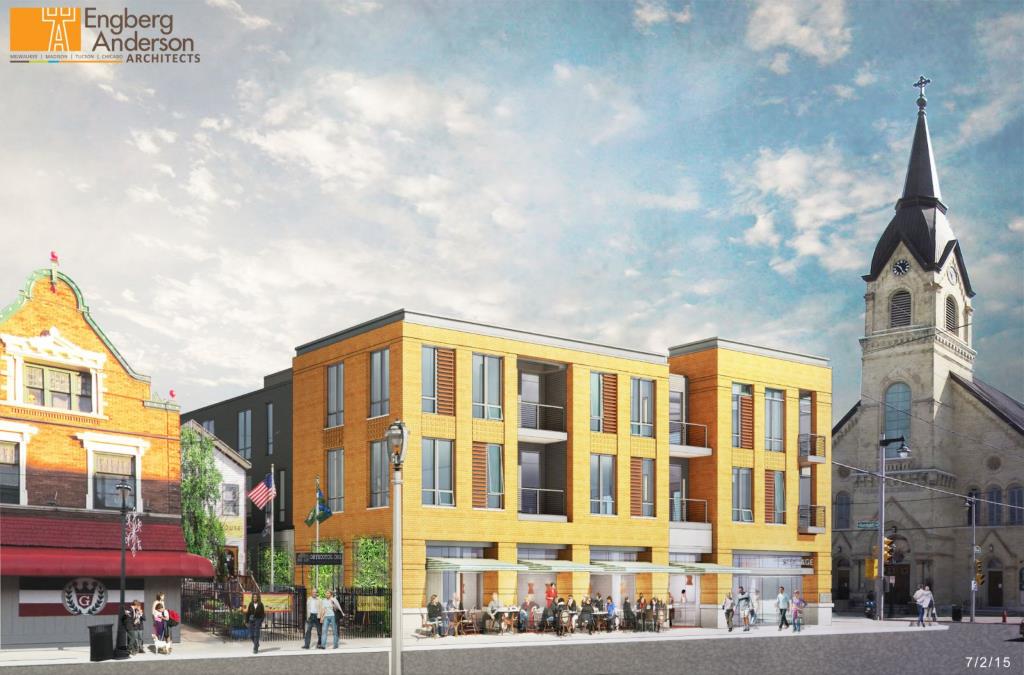
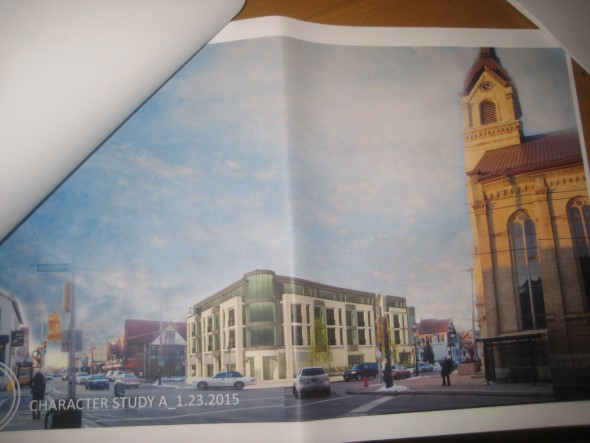
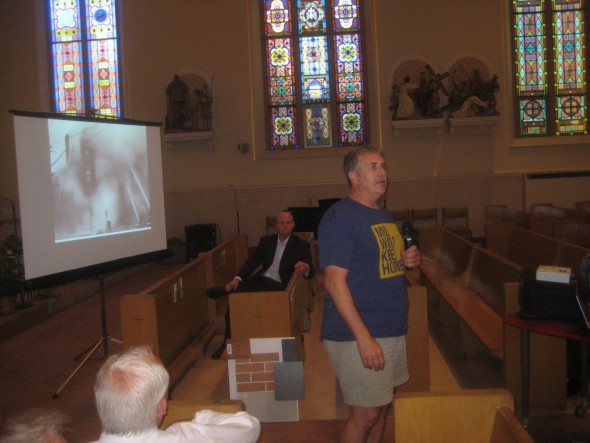
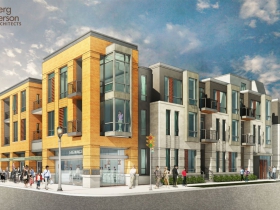
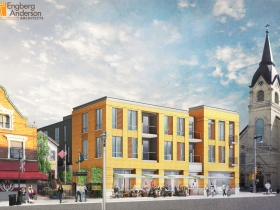
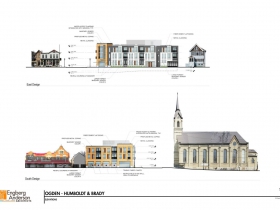
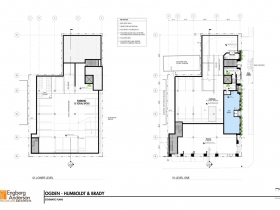
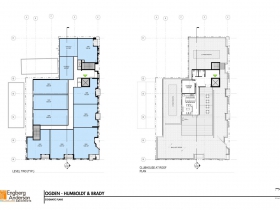
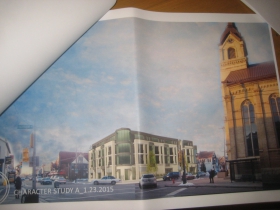
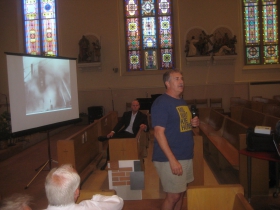
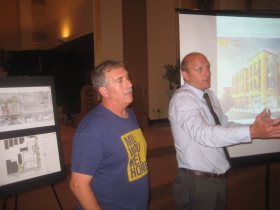
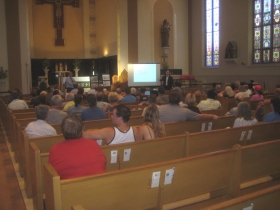
















That was a pleasure to read. I hope we hear more from Mr. Alioto. Cheers
Every neighborhood needs a Frank Alioto. Actually, more than one per block would be good, Frank’s love of Brady Street and his educated and studied reasoning must be a breath of fresh air in this type of meeting.
I wish Downer had a Frank Alioto. He completely nailed what its problem is.
Well done, Frank. I had the pleasure of being his neighbor for years and still enjoy his seminal Brady Street book.
He is 100% right. Brady Street doesn’t have a parking problem, it has a parking perception problem. Having street-parked it as a resident for 10 years, I can say parking is rarely a hassle outside of the terrible winter storm.
So many people fail to see the reason why Brady Street is great — it’s eminently walkable. This infill addition should be a value-add to the walkable environment.
Now if only Glorioso’s would only bring their old building back to life…